A few weeks ago, while cursing NJ Transit under my breath, I decided to screw it and call an Uber. I’m the sort of anxious where, once hailed, I stare at the Uber app on my phone until my driver arrives. Except this time, I didn’t have to. I pinchy pinched, and I could see a live Uber widget in the Smart Stack on my Apple Watch. It was a small moment — the kind where you quirk your head and go, “Well, would you look at that?”
Technology
SSD vs. HDD: What’s the difference, and which is best?
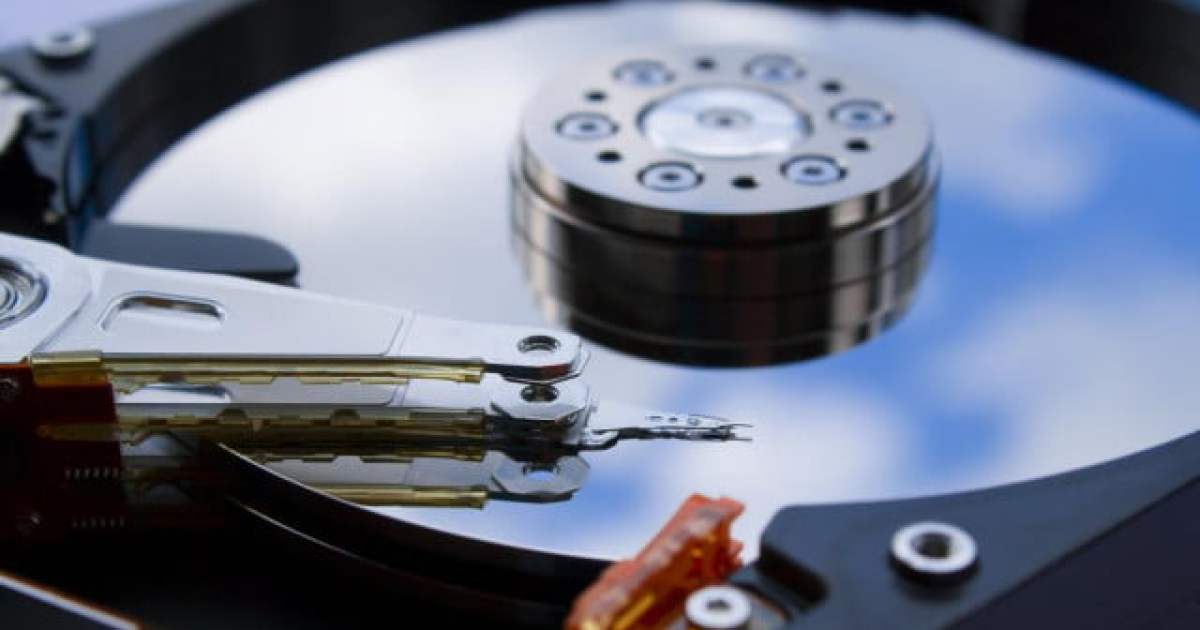
When on the hunt for a new PC or external hard drive, you’ll likely see two different storage options: Traditional hard disk drive (HDD) and solid-state drive (SSD). Deciding on the best one for your needs can be a massive obstacle if you don’t know the difference. Should you go with the old-school HDD or the newer, faster, and better SSD? Here, we’ll help you make the best choice based on crucial factors such as storage size, speed, and price.
If you decide an SSD is right for you, we’ve also rounded the best SSD deals available now.
Storage capacity
It isn’t difficult to find hard drives with several terabytes worth of storage — and they are getting bigger all the time — without too much of an increase in cost to the consumer.
In contrast, SSDs have lower capacity and become prohibitively expensive when you go beyond 4TB capacity in the 2.5-inch SATA model or 2TB in the M.2 model.
However, when it comes to storage space, hard drives will maintain their advantage for the foreseeable future although the conversation will change over the next few years when SATA SSDs appear with 16TB of capacity, and thereafter as prices fall to affordable levels. If you want to store something long-term or store large files and folders, hard drives are the way to go, but that is one of the only areas where hard drives still hold sway.
Speed, design, and durability
Drive “speed” is predominantly focused on how fast they can read and write data. For HDDs, the speed at which the platters spin helps determine the read/write times. When accessing a file, the “read” part of the read/write head notes the magnetic section’s positioning as it flies over the spinning platters. As long as the file being read was written sequentially, the HDD will skim it. However, as the disc becomes crowded with data, it’s easy for a file to be written across multiple sections. This phenomenon is called “fragmenting” and leads to files taking longer to read.
With SSDs, fragmentation is not an issue. Files can be written sporadically across the cells — and are designed to do so — with little impact on read times, as each cell is accessed simultaneously. This easy, simultaneous access to each cell means files are read at incredibly fast speeds — far faster than an HDD can achieve, regardless of fragmentation. That’s why SSDs can make a system feel snappy — because their ability to access data across the entire drive, known as random access, is so much faster.
This faster read speed comes with a catch. SSD cells can wear out over time. They push electrons through a gate to set its state, which wears on the cell and, over time, reduces its performance until eventually the SSD wears out. That said, the time it would take for this to happen for most users is quite long; one would likely upgrade their SSD due to either obsolescence or a desire for more storage space before a standard SSD would fail. There are also technologies like TRIM, which help keep SSDs from degrading too quickly.
There is a balancing act between durability, capacity, and speed as NAND storage technology has moved from the original SLC with 1 bit of data per cell to MLC with 2 bits, then TLC (the T is for Triple), and now QLC for Quad, i.e. 4 bits of data per cell. The Samsung 860 QVO earns that QVO suffix through its use of QLC flash storage.
Cramming more bits of data into each cell allows the manufacturers to increase storage capacity and reduce costs. Unfortunately, there is a problem with hardware longevity, as it becomes more complicated to determine the state of each of the bits in a given cell as the silicon ages. Furthermore, the process of reading and writing takes longer than it did previously, so we see a distinct split in the characteristics of new SSDs. Some models, such as WD Black or Samsung 980 Pro, feature a PCI Express 4.0 interface with TLC NAND and are blazing fast, while other SSDs deliver higher capacity at a lower price but with lower performance and a shorter life span.
The single biggest problem with hard drives is that they are much more vulnerable to physical damage due to their use of mechanical parts. If one were to drop a laptop with an HDD, there is a high likelihood that all those moving parts would collide, resulting in potential data loss and even destructive physical damage that could kill the HDD outright. SSDs have no moving parts, so they can better survive the rigors we impose upon our portable devices and laptops.
Another thing to be mindful of is the design of these devices. HDDs are almost always a 3.5-inch or 2.5-inch disk, while SSDs come in various shapes and sizes. The most common is still the 2.5-inch drive, but smaller SSDs with the M.2 form are becoming increasingly common. If you are considering an upgrade to your PC or laptop with an M.2 SSD, you will need to do some research into NVMe, M.2, and SATA SSDs. This will help you determine whether the M.2 supports the NVMe protocol and whether it is PCI Express Gen 3 or Gen 4. It would be a shame to install a slow SSD in a fast system, and equally upsetting to buy a fast SSD for a system that is unable to reap the benefits of the technology. We love M.2 SSDs, despite their higher price over their SATA III counterparts, as they are much smaller and increasingly offer the fastest storage speeds.
For further information on SATA, you can check out our guide that explains what SATA is.
Pricing

Although prices have been coming down for years, SSDs are still more expensive per gigabyte than hard drives. For similar amounts of storage, you could end up paying nearly twice as much for an SSD than an HDD — and even more at higher capacities.
While you’re paying higher prices for less space with an SSD, you’re investing in faster, more efficient, and far more durable data storage overall. If you’re building a system with speed, power needs, or portability in mind, then an SSD is going to be the better choice. Adding another hard drive is easy and cheap on most desktops, so it’s a good upgrade down the road if you need more storage space. Having a separate data drive also allows you to update or reinstall your operating system with minimal effort.
In the past year, we have suffered a shortage of PC hardware, and that has stalled the steady reduction in SSD prices. Even so, we are finding fewer reasons to opt for HDDs in most systems. For as little as $60, there are brand-name 500GB SSDs available, which is almost the same price as the average 1TB HDD. At those prices, even casual users will notice a drastic improvement in terms of boot-up time, data access, and general system snappiness. We expect new systems to include an SSD — or at least a hybrid drive.
Hybrid drives, externals, and the final word

Hybrid drives offer a middle ground between the benefits of SSDs and HDDs. They combine an HDD and SSD into one device. There are a couple of different versions of this sort of technology.
First, there are the SSHDs — or solid-state hybrid drives. These drives are full-sized HDDs (often around one or two terabytes) that come equipped with an extra cache of SSD NAND memory (usually a few GBs worth). SSHDs work by learning which files you use most often and writing them to the quickly accessible SSD section of memory. All other files are stored on the HDD’s spinning disc. While an SSHD won’t give you the durability and lower power needs of an SSD, they should still offer a considerable uptick in speed for certain processes.
You can find SSHDs that can fit a 2.5-inch slot, as well as 3.5-inch options. In addition to these two hybrids, which make excellent choices for those with space for only one drive, one could also opt to buy multiple separate drives, depending on their configuration and the amount of space they have for mounting.
AMD Ryzen systems with X399, X400, or X500-series chipset motherboards have access to different types of AMD’s StoreMI technology drives. You could arguably use any combination of these drives to build your own custom storage system; However, the go-to choice for most users is a small SSD paired with a larger HDD. Another storage option is Intel’s Optane memory, which functions as a small caching drive in itself, but it’s not available on AMD systems.
You do have the choice of using a drive as an external storage device for your system. A number of manufacturers create drives like this with the sole intention of using them as an external storage source. They also tend to manufacture external housing kits that fit a range of SSDs and HDDs. External drives deliver the features and benefits of an internal drive, but with added portability.
SSDs are quickly getting singled out as the preferred solution for older, mechanical HDDs. As you look for a new storage setup for your device, consider options that feature an SSD. Those drives tend to run faster and create a noticeable difference in your performance levels. The price tends to be higher for these products, but it will pay off in the long run, thanks to the increased speed you’ll experience from the SSD tech.
Technology
One-minute-long Galaxy Tab S10+ promo video just surfaced
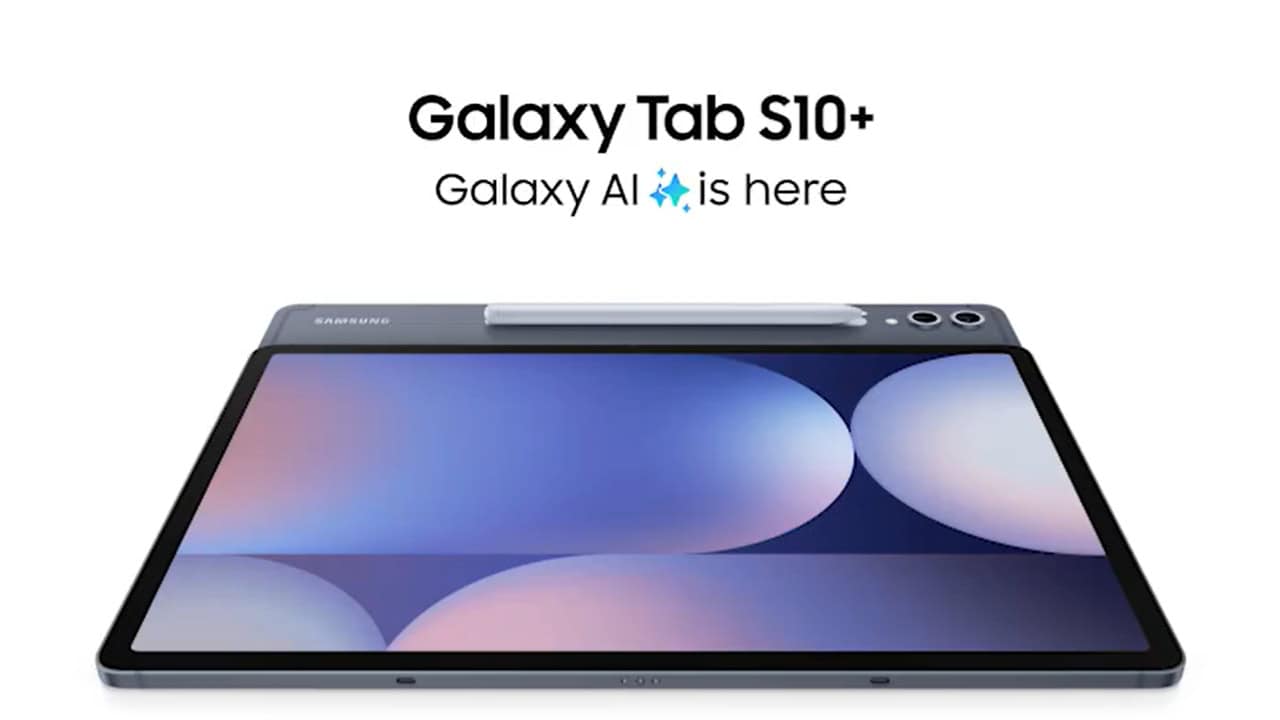
A one-minute-long Galaxy Tab S10+ promo video has just appeared online, as we’re waiting for the launch event. As a reminder, that tablet is expected to arrive tomorrow, September 26. Samsung indirectly confirmed that launch event.
In addition to the Galaxy Tab S10+, the Galaxy Tab S10 Ultra is also expected, as well as the Galaxy S24 FE. So we’ll have plenty to see there, it seems.
The Galaxy Tab S10+ promo video is here, one day ahead of its launch
Now, in regards to this promo video, it comes from a tipster, Arsene Lupin. He shared it via X, and you can check it out by clicking here. It gives us a good look at the device and some of its features.
As some of you already know, we’ve already shared plenty of details regarding this tablet. We’ve exclusively shared not only its design, and the design of the Galaxy Tab S10 Ultra, but a bunch of their specs as well.
With that being said, the Galaxy Tab S10+ will have slightly thicker bezels than the ‘Ultra’ model, but they’ll still be quite thin, especially considering this is a tablet. Also, the ‘Plus’ variant will not have a notch, unlike the ‘Ultra’.
The device will have two cameras on the back, and support the S Pen stylus
In this video, you can clearly see that there will be two cameras included on the back of the device. This tablet will obviously support the S Pen stylus too, and the company is unsurprisingly teasing Galaxy AI here.
The ‘Circle to Search’ feature is teased here, along with an “intensely brilliant screen”. This video also confirms that the Galaxy Tab S10+ is water and dust-resistant.
The keyboard accessory for the tablet is also shown here, along with a Galaxy AI button which will be included on it. That keyboard accessory will have a kickstand on the back.
What’s also interesting is that the US price tags for the device surfaced. The model with 12GB of RAM and 256GB of storage will cost $999.99. The model with the same RAM count and 512GB of storage will set you back $1,119.99.
Servers computers
DIY 20u + server rack. Part 4. Assembly and done!
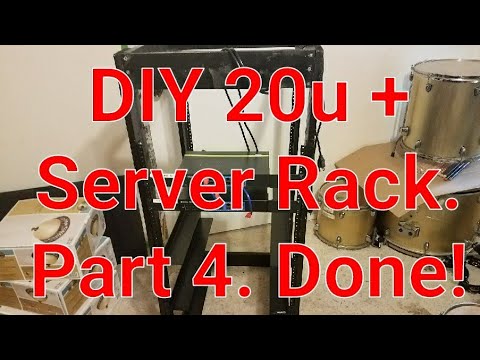
Assembling the DIY 20u server rack and calling it complete
source
Technology
Get ready for Meta Connect
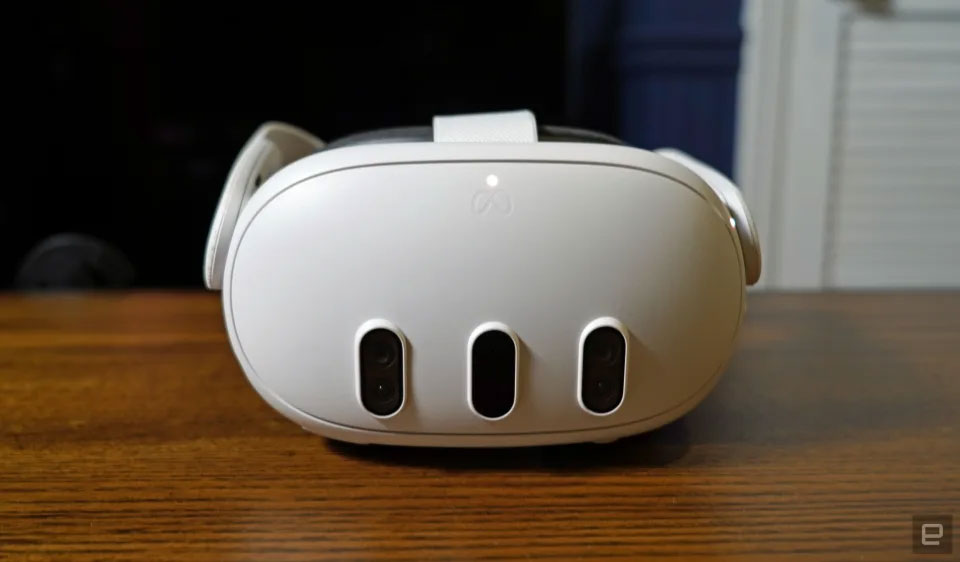
Meta’s annual VR / AR shindig kicks off a few hours after this newsletter hits your inboxes. As usual, it’ll lay down the direction of travel for the next year of strapping stuff to your face. So, before the awkward stage banter begins, it’s worth reading up on what’s to come. We’ve prepared .
That includes , a pair of Buddy Holly glasses offering augmented reality in a more user friendly package. CEO Mark Zuckerberg has already hinted about its potential, but he added we’ll only see the prototype today. We can also expect a cheaper version of the Quest 3 and some more AI doodads to come to the Ray-Ban smart glasses.
. Everything kicks off at 1PM ET / 10AM PT, but the color commentary will start long before then.
— Dan Cooper
All the (mostly games) news you might have missed
She was a key witness in Sam Bankman-Fried’s criminal trial.
Caroline Ellison, . Ellison pled guilty at the end of 2022 for her role in the FTX fraud and was a key witness in Bankman-Fried’s criminal trial. Ellison will spend a further three years on supervised release once she has left prison. In a statement, the disgraced crypto executive expressed remorse for her conduct.
Except in Japan, for obvious reasons.
Depending on your loyalties, Palworld is either an exciting spin on the adventure genre or a shameless rip-off of Pokémon, but with guns. . The title was just surprise-launched for the PS5 in 68 countries, with Japan an obvious exception.
I want this thing so darn much.
I’ve been a fan of cute pianos that teach you how to play for a long while and have reviewed a few for Engadget. Now, . It’ll integrate with Duolingo’s app, which has music courses to teach folks how to grasp the basics of playing. And, did I mention that I really want to play with one of these?
Raise your hand if you didn’t know this was a thing.
TikTok has announced The platform announced it’ll cease operations on November 28 and delete all user data and login information soon after. It has advised subscribers to reach out to their payment platforms of choice to get refunds before that date. Don’t worry though, I’m a technology journalist and even I didn’t know TikTok had its own standalone streaming service.
Technology
WhatFix raises a whopping $125M for its in-app user guides
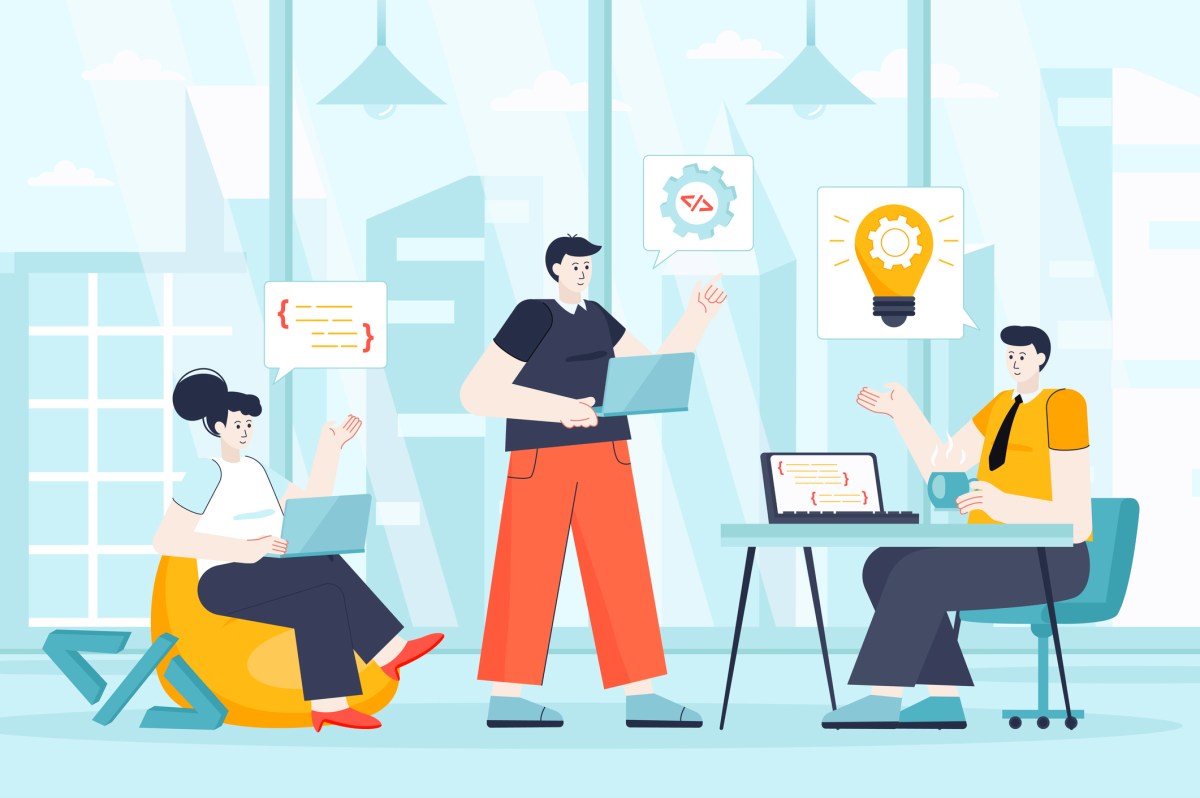
Digital transformation — upgrading a company’s legacy apps and processes with new tech — has long been a buzzy and lucrative business. But the pandemic supercharged the market.
Covid pandemic lockdowns and the widespread move to work-from-home spurred brands relying on old technology to modernize their organizations. According to Statista, worldwide spending on digital transformation reached $1.85 trillion in 2022, up more than 16% from the previous year.
WhatFix is among the digital transformation firms that have benefited enormously from the boom. The San Jose-based company, which offers a platform that demos how to use third-party software, this week closed a $125 million Series E round led by Warburg Pincus.
CEO Khadim Batti says that the round, which also had participation from SoftBank’s Vision Fund 2, values WhatFix at a figure 50% higher than its Series D valuation in 2021. WhatFix never disclosed that valuation, but my colleague Ingrid Lunden ascertained that it was close to $600 million. We can assume, then, that the Series E brings the company’s valuation to around $900 million.
Batti co-launched WhatFix with Vara Kumar in 2013 after the pair met while working at Huawei. The Chinese electronics giant had just opened an office in India, near the founders’ home cities.
WhatFix wasn’t an overnight success. Batti and Kumar originally tried building a business around a search engine optimization tool called Search Enabler, but roadblocks kept arising — including user confusion. Few customers knew how to implement the tool’s suggestions, Batti says.
“The recommendations were generally quite basic, such as the webpage not having a title, but customers didn’t know how to use applications like WordPress to correct the error,” he told TechCrunch. “Most were small businesses without technology know-how.”
Out of this early failure sprang inspiration. Batti and Kumar decided to pivot to try their hands at a different challenge: teaching people how to use new software.
Together, the two entrepreneurs built WhatFix, which provides on-screen tutorials for around 750 apps, drawing on a database of tens of thousands of pages of documentation. The platform effectively “lays” on top of desktop and web apps to provide guidance for onboarding, suggested actions, and self-service support.

“We’re able to provide single-line answers from existing knowledge repositories and present them right inside software applications, in the flow of users’ work,” Batti explained.
Batti says that WhatFix has over 10 million users and 700 customers, including Shell, Microsoft, Schneider Electric, Cisco, and the EU’s European Centre for Disease Prevention and Control. The company’s annual recurring revenue grew 4.5x year-over-year this year, driven by sales of its software-as-a-service plans, he says.
WhatFix occupies the software segment known as digital adoption platforms, or “DAP.” DAP is massive; Gartner predicts that 70% of organizations will use a DAP by 2025. DAP vendors were generating roughly $646 million in revenue combined in 2022, and VC investments in DAP grew sixfold to $470 million that same year.
With the competition getting fiercer — SAP this month paid $1.5 billion to acquire DAP platform WalkMe — WhatFix is doubling down on expansion and diversification, Batti said.
Since its last funding round, WhatFix has rolled out connectors for customer relationship management and enterprise resource planning software, as well as a monitoring dashboard for managers to view app engagement metrics. (Batti says that these products now make up 15% of WhatFix’s revenue.) WhatFix has also doubled its already-massive workforce to over 960 employees to open new offices in Singapore, Germany, Australia, and India.
Looking ahead, WhatFix, with its $280 million in total capital raised, plans to make strategic acquisition (adding to the acquisitions of Airim, Nittio Learn, and Leap.is it has made over the last four years) and invest in product development. Like practically every company these days, WhatFix is keeping a pulse on generative AI; Batti says that WhatFix is experimenting with automated “agents” that can take actions inside certain apps, akin to robotic process automation.
“Looking ahead, the DAP market is expected to evolve toward more AI-driven, personalized experiences with deeper enterprise system integration,” Batti said. “We’ve been very disciplined with our now-$265 million capital, and our ability to grow profitably while expanding within our customer base has helped us maintain strong financial health.”
Is an IPO in WhatFix’s future? Batti wouldn’t say. But he did note that funder Warburg Pincus has a “proven track record in guiding companies to IPO and operating with public companies positions.” Take that how you will.
Servers computers
What are the benefits of Blade servers compared to rack servers?

Created on August 10, 2011 using FlipShare. .
source
Technology
watchOS 11 puts a Dynamic Island on your wrist

I’ve had a few of those moments while testing watchOS 11 these past few months, both in the beta and while reviewing the new Series 10. This year’s software update adds Live Activities to the wrist as well as suggested widgets to the Smart Stack. The latter pop up based on time, date, location — context clues, essentially. When it’s about to rain and you happen to look at your wrist, you might notice the weather widget pops up first. On a plane, I look down and can see how much time is left until landing from the United app. Other times, usually in bustling cafes, I see the Shazam widget. It’s never when I actually don’t know the song, but I see it enough times to take note. If you travel abroad, the new Translate app will automatically pop up in the stack.
In practice, you might never notice it. For one, you have to be looking at your wrist. Live Activities — think directions from Citymapper or Google Maps, Uber, etc. — are a bit more eye-catching simply because they’re live. But everything else? It just sort of happens. Outside of fitness, most people tell me they use their smartwatches to triage notifications. This feels like an evolved version of that. When it works, it sort of fades into the background. I dig Live Activities on my phone, but I love it on the wrist.
watchOS 11 is full of neat little things you stumble upon. For instance, double tap has been improved so that you can actually use it to scroll through apps. Last year, it was mostly limited to selecting actions. It feels less gimmicky this way, and I find myself using it much more often. You can also now hold down the Ultra’s Action Button to change what it does. It’s infinitely easier to switch things up compared to rifling through the settings menu. You can now use the digital crown to adjust volume on the Apple TV.
Apple Intelligence may not be coming to the Apple Watch, but these are the sort of updates that actually feel smart. The most AI-like update is in the revamped Photos watchface. There’s now “intelligent photo discovery” where a machine learning algorithm identifies the best photos, composition, and facial expressions for a watchface. It’s impressive in both good and bad ways.
The bad: when I initially added the watchface a few months ago, I didn’t think much about including people, pets, nature, or city images. I just let it do its thing. An artfully composed watchface of my mother’s funeral popped up. I laughed about it. After all, I’m the sentimental biddy who had to document everything and can’t bring myself to delete painful photos. Hard to blame a non-sentient algorithm. If not a dead mom, it could’ve easily been an ex-lover or friend. The moral is algorithms are smart and photos are emotional, but AI is not emotionally smart.
The good: when you’re intentional about which photos are allowed, this watchface is a delight. I turned off the people, nature, and city images and zeroed in on my pets. Now, every time I look down at my wrist, I’m filled with instant serotonin. In black and white, my goober cats are stunning panthers. Sometimes, I just sit there tapping away staring at their beautiful, derpy faces.
It’s funny. Back when watchOS 11 was first announced in June, I thought the fitness updates would be my favorite. Things like Training Load, Vitals, and the ability to pause your Activity Rings were long overdue. (I’ve already written about them, and my opinion remains that they are stellar additions.) But on the whole, I’ve more or less been more enamored with all the little tidbits that add up to a smarter, more personalized experience. Now, if you’ll excuse me, I’m about to order food on Grubhub and see if I can track my dinner from the wrist.
-

 Womens Workouts2 days ago
Womens Workouts2 days ago3 Day Full Body Women’s Dumbbell Only Workout
-

 News7 days ago
News7 days agoYou’re a Hypocrite, And So Am I
-

 Sport6 days ago
Sport6 days agoJoshua vs Dubois: Chris Eubank Jr says ‘AJ’ could beat Tyson Fury and any other heavyweight in the world
-

 Technology1 week ago
Technology1 week agoWould-be reality TV contestants ‘not looking real’
-

 News3 days ago
News3 days agoOur millionaire neighbour blocks us from using public footpath & screams at us in street.. it’s like living in a WARZONE – WordupNews
-

 Science & Environment6 days ago
Science & Environment6 days ago‘Running of the bulls’ festival crowds move like charged particles
-

 Science & Environment7 days ago
Science & Environment7 days agoHow to unsnarl a tangle of threads, according to physics
-

 Science & Environment6 days ago
Science & Environment6 days agoSunlight-trapping device can generate temperatures over 1000°C
-

 Science & Environment6 days ago
Science & Environment6 days agoQuantum ‘supersolid’ matter stirred using magnets
-

 CryptoCurrency6 days ago
CryptoCurrency6 days agoEthereum is a 'contrarian bet' into 2025, says Bitwise exec
-

 Science & Environment7 days ago
Science & Environment7 days agoITER: Is the world’s biggest fusion experiment dead after new delay to 2035?
-

 Science & Environment6 days ago
Science & Environment6 days agoLiquid crystals could improve quantum communication devices
-

 CryptoCurrency6 days ago
CryptoCurrency6 days agoDZ Bank partners with Boerse Stuttgart for crypto trading
-

 CryptoCurrency6 days ago
CryptoCurrency6 days agoBitcoin bulls target $64K BTC price hurdle as US stocks eye new record
-

 Science & Environment7 days ago
Science & Environment7 days agoWhy this is a golden age for life to thrive across the universe
-

 Science & Environment6 days ago
Science & Environment6 days agoHyperelastic gel is one of the stretchiest materials known to science
-

 Science & Environment7 days ago
Science & Environment7 days agoMaxwell’s demon charges quantum batteries inside of a quantum computer
-

 Science & Environment6 days ago
Science & Environment6 days agoQuantum forces used to automatically assemble tiny device
-

 Science & Environment7 days ago
Science & Environment7 days agoLaser helps turn an electron into a coil of mass and charge
-

 Science & Environment7 days ago
Science & Environment7 days agoNerve fibres in the brain could generate quantum entanglement
-

 Science & Environment6 days ago
Science & Environment6 days agoHow to wrap your mind around the real multiverse
-

 Science & Environment1 week ago
Science & Environment1 week agoCaroline Ellison aims to duck prison sentence for role in FTX collapse
-

 Science & Environment6 days ago
Science & Environment6 days agoNuclear fusion experiment overcomes two key operating hurdles
-

 CryptoCurrency6 days ago
CryptoCurrency6 days agoBitcoin miners steamrolled after electricity thefts, exchange ‘closure’ scam: Asia Express
-

 CryptoCurrency6 days ago
CryptoCurrency6 days agoCardano founder to meet Argentina president Javier Milei
-

 CryptoCurrency6 days ago
CryptoCurrency6 days agoDorsey’s ‘marketplace of algorithms’ could fix social media… so why hasn’t it?
-

 CryptoCurrency6 days ago
CryptoCurrency6 days agoLow users, sex predators kill Korean metaverses, 3AC sues Terra: Asia Express
-

 Science & Environment3 days ago
Science & Environment3 days agoMeet the world's first female male model | 7.30
-

 News6 days ago
News6 days agoIsrael strikes Lebanese targets as Hizbollah chief warns of ‘red lines’ crossed
-

 Technology6 days ago
Technology6 days agoiPhone 15 Pro Max Camera Review: Depth and Reach
-

 News6 days ago
News6 days agoBrian Tyree Henry on voicing young Megatron, his love for villain roles
-

 Science & Environment7 days ago
Science & Environment7 days agoTime travel sci-fi novel is a rip-roaringly good thought experiment
-

 Health & fitness1 week ago
Health & fitness1 week agoThe secret to a six pack – and how to keep your washboard abs in 2022
-

 CryptoCurrency6 days ago
CryptoCurrency6 days agoRedStone integrates first oracle price feeds on TON blockchain
-

 CryptoCurrency6 days ago
CryptoCurrency6 days agoSEC asks court for four months to produce documents for Coinbase
-

 CryptoCurrency6 days ago
CryptoCurrency6 days agoBlockdaemon mulls 2026 IPO: Report
-

 CryptoCurrency6 days ago
CryptoCurrency6 days agoCoinbase’s cbBTC surges to third-largest wrapped BTC token in just one week
-

 Sport6 days ago
Sport6 days agoUFC Edmonton fight card revealed, including Brandon Moreno vs. Amir Albazi headliner
-

 Science & Environment6 days ago
Science & Environment6 days agoHow one theory ties together everything we know about the universe
-

 Science & Environment6 days ago
Science & Environment6 days agoQuantum time travel: The experiment to ‘send a particle into the past’
-

 Science & Environment6 days ago
Science & Environment6 days agoPhysicists are grappling with their own reproducibility crisis
-

 CryptoCurrency6 days ago
CryptoCurrency6 days ago2 auditors miss $27M Penpie flaw, Pythia’s ‘claim rewards’ bug: Crypto-Sec
-

 CryptoCurrency6 days ago
CryptoCurrency6 days agoJourneys: Robby Yung on Animoca’s Web3 investments, TON and the Mocaverse
-

 CryptoCurrency6 days ago
CryptoCurrency6 days ago$12.1M fraud suspect with ‘new face’ arrested, crypto scam boiler rooms busted: Asia Express
-

 CryptoCurrency6 days ago
CryptoCurrency6 days agoCertiK Ventures discloses $45M investment plan to boost Web3
-

 CryptoCurrency6 days ago
CryptoCurrency6 days agoVitalik tells Ethereum L2s ‘Stage 1 or GTFO’ — Who makes the cut?
-

 CryptoCurrency6 days ago
CryptoCurrency6 days ago‘No matter how bad it gets, there’s a lot going on with NFTs’: 24 Hours of Art, NFT Creator
-
Business6 days ago
How Labour donor’s largesse tarnished government’s squeaky clean image
-

 News6 days ago
News6 days agoBrian Tyree Henry on voicing young Megatron, his love for villain roles
-

 Womens Workouts4 days ago
Womens Workouts4 days agoBest Exercises if You Want to Build a Great Physique
-

 Womens Workouts4 days ago
Womens Workouts4 days agoEverything a Beginner Needs to Know About Squatting
-

 News6 days ago
News6 days agoChurch same-sex split affecting bishop appointments
-

 Politics1 week ago
Politics1 week agoTrump says he will meet with Indian Prime Minister Narendra Modi next week
-

 Politics6 days ago
Politics6 days agoLabour MP urges UK government to nationalise Grangemouth refinery
-

 News7 days ago
News7 days agoRoad rage suspects in custody after gunshots, drivers ramming vehicles near Boise
-

 Health & fitness1 week ago
Health & fitness1 week agoThe maps that could hold the secret to curing cancer
-

 CryptoCurrency6 days ago
CryptoCurrency6 days agoHelp! My parents are addicted to Pi Network crypto tapper
-

 Science & Environment6 days ago
Science & Environment6 days agoUK spurns European invitation to join ITER nuclear fusion project
-

 Science & Environment6 days ago
Science & Environment6 days agoWhy we need to invoke philosophy to judge bizarre concepts in science
-

 Science & Environment6 days ago
Science & Environment6 days agoFuture of fusion: How the UK’s JET reactor paved the way for ITER
-

 Science & Environment6 days ago
Science & Environment6 days agoHow do you recycle a nuclear fusion reactor? We’re about to find out
-

 CryptoCurrency6 days ago
CryptoCurrency6 days agoSEC sues ‘fake’ crypto exchanges in first action on pig butchering scams
-

 CryptoCurrency6 days ago
CryptoCurrency6 days agoCZ and Binance face new lawsuit, RFK Jr suspends campaign, and more: Hodler’s Digest Aug. 18 – 24
-

 CryptoCurrency6 days ago
CryptoCurrency6 days agoTelegram bot Banana Gun’s users drained of over $1.9M
-

 CryptoCurrency6 days ago
CryptoCurrency6 days agoVonMises bought 60 CryptoPunks in a month before the price spiked: NFT Collector
-

 CryptoCurrency6 days ago
CryptoCurrency6 days ago‘Silly’ to shade Ethereum, the ‘Microsoft of blockchains’ — Bitwise exec
-

 CryptoCurrency6 days ago
CryptoCurrency6 days agoEthereum falls to new 42-month low vs. Bitcoin — Bottom or more pain ahead?
-
Business6 days ago
Thames Water seeks extension on debt terms to avoid renationalisation
-
Politics6 days ago
‘Appalling’ rows over Sue Gray must stop, senior ministers say | Sue Gray
-

 News4 days ago
News4 days agoBangladesh Holds the World Accountable to Secure Climate Justice
-

 News3 days ago
News3 days agoFour dead & 18 injured in horror mass shooting with victims ‘caught in crossfire’ as cops hunt multiple gunmen
-

 Technology6 days ago
Technology6 days agoFivetran targets data security by adding Hybrid Deployment
-

 Money7 days ago
Money7 days agoWhat estate agents get up to in your home – and how they’re being caught
-

 Technology1 week ago
Technology1 week agoCan technology fix the ‘broken’ concert ticketing system?
-

 Science & Environment6 days ago
Science & Environment6 days agoA new kind of experiment at the Large Hadron Collider could unravel quantum reality
-

 Fashion Models6 days ago
Fashion Models6 days agoMixte
-

 Science & Environment6 days ago
Science & Environment6 days agoHow Peter Higgs revealed the forces that hold the universe together
-

 News7 days ago
News7 days ago▶️ Media Bias: How They Spin Attack on Hezbollah and Ignore the Reality
-

 Science & Environment6 days ago
Science & Environment6 days agoBeing in two places at once could make a quantum battery charge faster
-

 CryptoCurrency6 days ago
CryptoCurrency6 days agoLouisiana takes first crypto payment over Bitcoin Lightning
-

 CryptoCurrency6 days ago
CryptoCurrency6 days agoCrypto scammers orchestrate massive hack on X but barely made $8K
-

 Science & Environment6 days ago
Science & Environment6 days agoTiny magnet could help measure gravity on the quantum scale
-

 Science & Environment6 days ago
Science & Environment6 days agoA tale of two mysteries: ghostly neutrinos and the proton decay puzzle
-

 CryptoCurrency6 days ago
CryptoCurrency6 days agoDecentraland X account hacked, phishing scam targets MANA airdrop
-

 CryptoCurrency6 days ago
CryptoCurrency6 days agoElon Musk is worth 100K followers: Yat Siu, X Hall of Flame
-

 CryptoCurrency6 days ago
CryptoCurrency6 days agoBitcoin price hits $62.6K as Fed 'crisis' move sparks US stocks warning
-

 CryptoCurrency6 days ago
CryptoCurrency6 days agoBeat crypto airdrop bots, Illuvium’s new features coming, PGA Tour Rise: Web3 Gamer
-

 CryptoCurrency6 days ago
CryptoCurrency6 days agoMemecoins not the ‘right move’ for celebs, but DApps might be — Skale Labs CMO
-

 CryptoCurrency6 days ago
CryptoCurrency6 days agoETH falls 6% amid Trump assassination attempt, looming rate cuts, ‘FUD’ wave
-
Politics6 days ago
The Guardian view on 10 Downing Street: Labour risks losing the plot | Editorial
-

 Politics6 days ago
Politics6 days agoI’m in control, says Keir Starmer after Sue Gray pay leaks
-
Business6 days ago
UK hospitals with potentially dangerous concrete to be redeveloped
-
Politics6 days ago
‘Hundreds’ of prisoners freed early in England and Wales not fitted with tags | Prisons and probation
-
Business6 days ago
Axel Springer top team close to making eight times their money in KKR deal
-

 Politics6 days ago
Politics6 days agoParties, brothels and drugs plague holiday let neighbours, say MPs
-

 News6 days ago
News6 days ago“Beast Games” contestants sue MrBeast’s production company over “chronic mistreatment”
-

 News6 days ago
News6 days agoSean “Diddy” Combs denied bail again in federal sex trafficking case
-

 News6 days ago
News6 days agoBrian Tyree Henry on his love for playing villains ahead of “Transformers One” release
-

 CryptoCurrency6 days ago
CryptoCurrency6 days agoBitcoin options markets reduce risk hedges — Are new range highs in sight?
-

 Money5 days ago
Money5 days agoBritain’s ultra-wealthy exit ahead of proposed non-dom tax changes

You must be logged in to post a comment Login